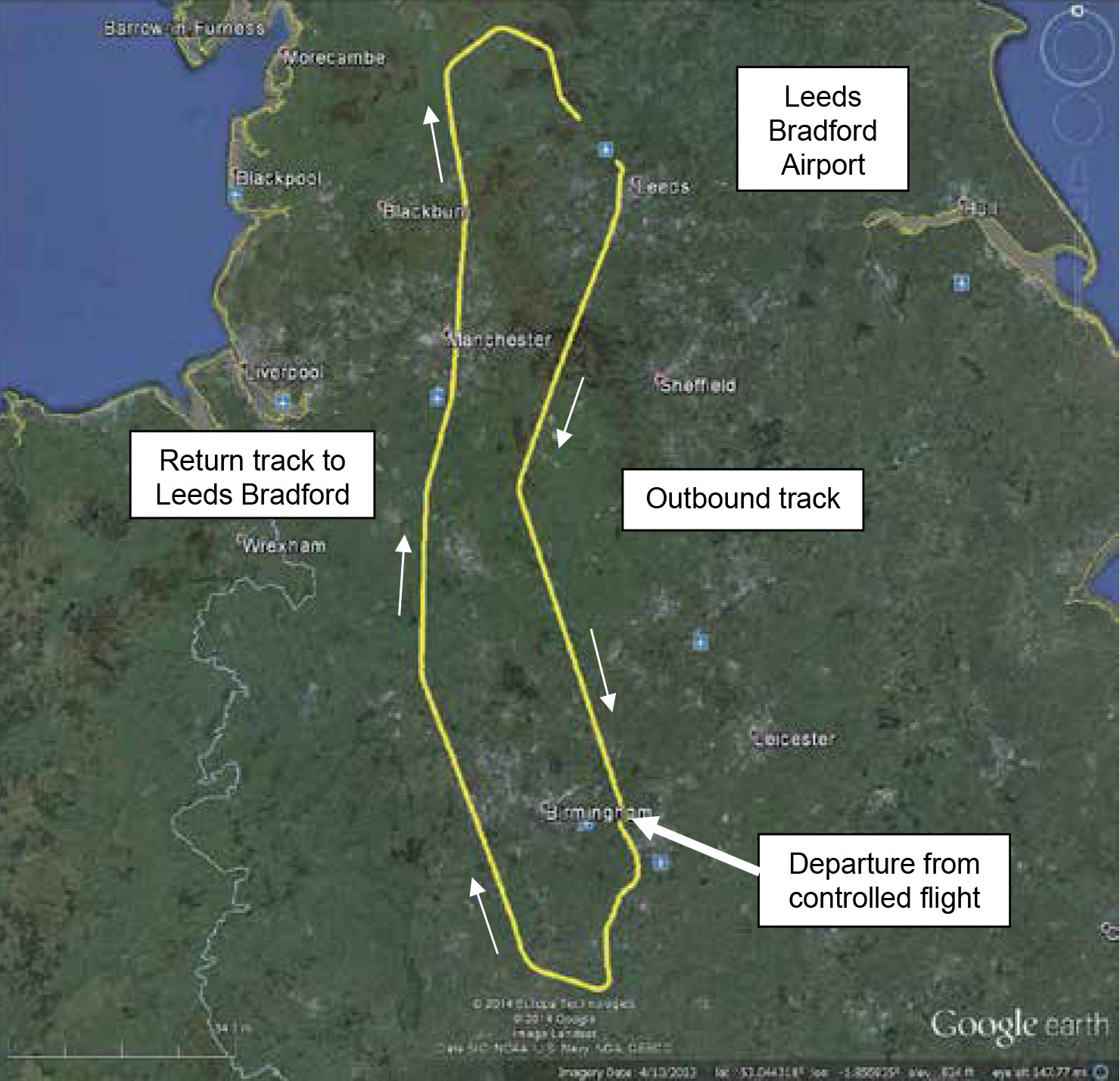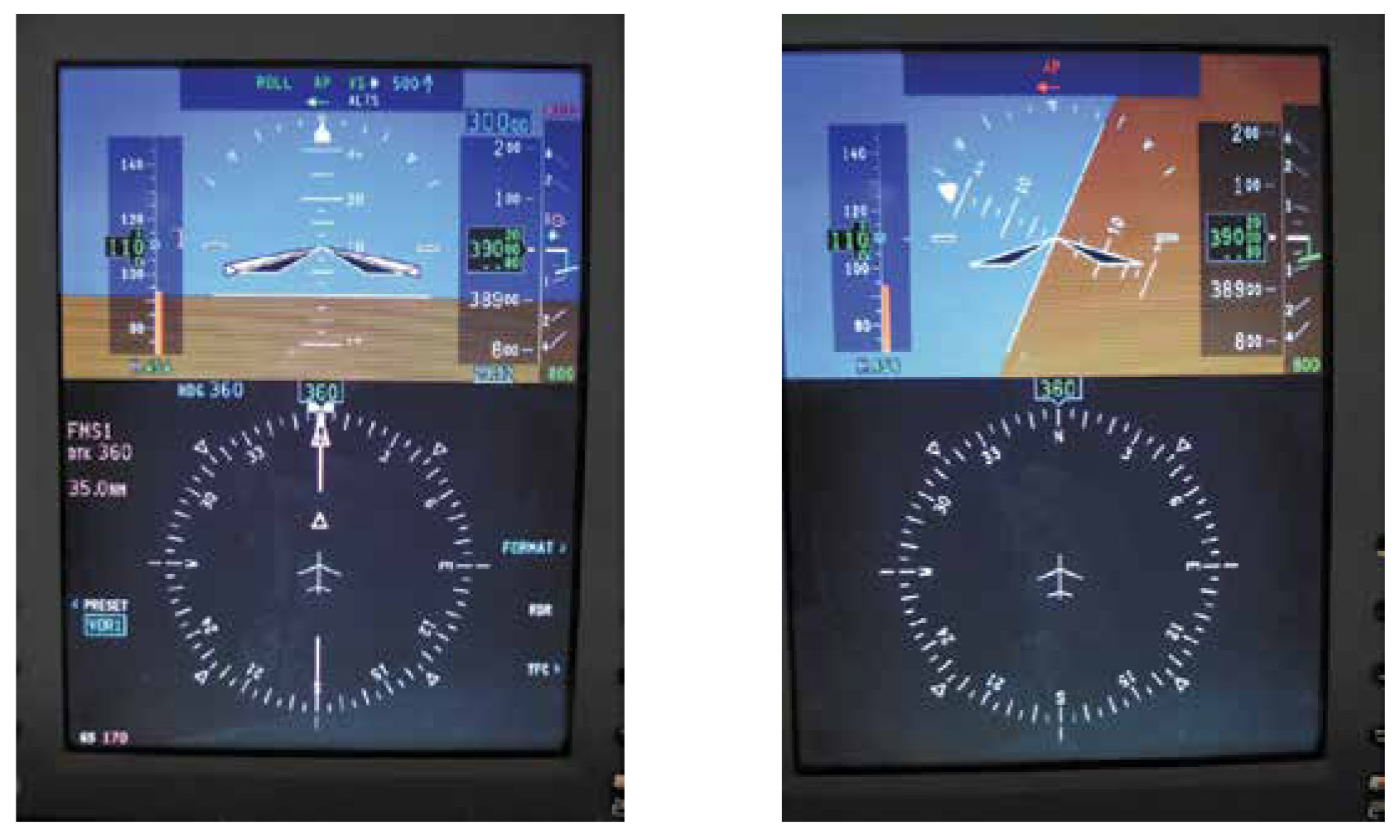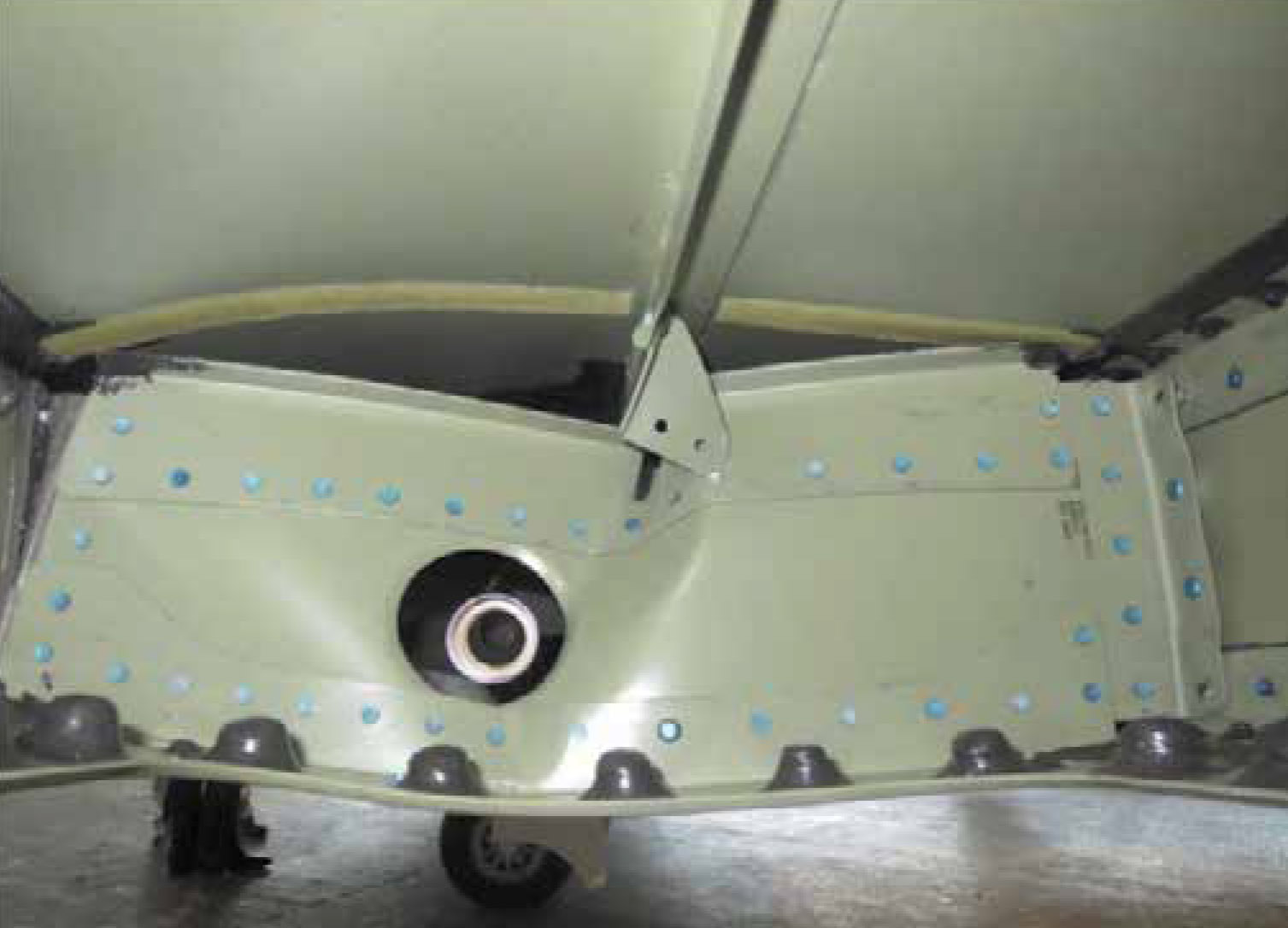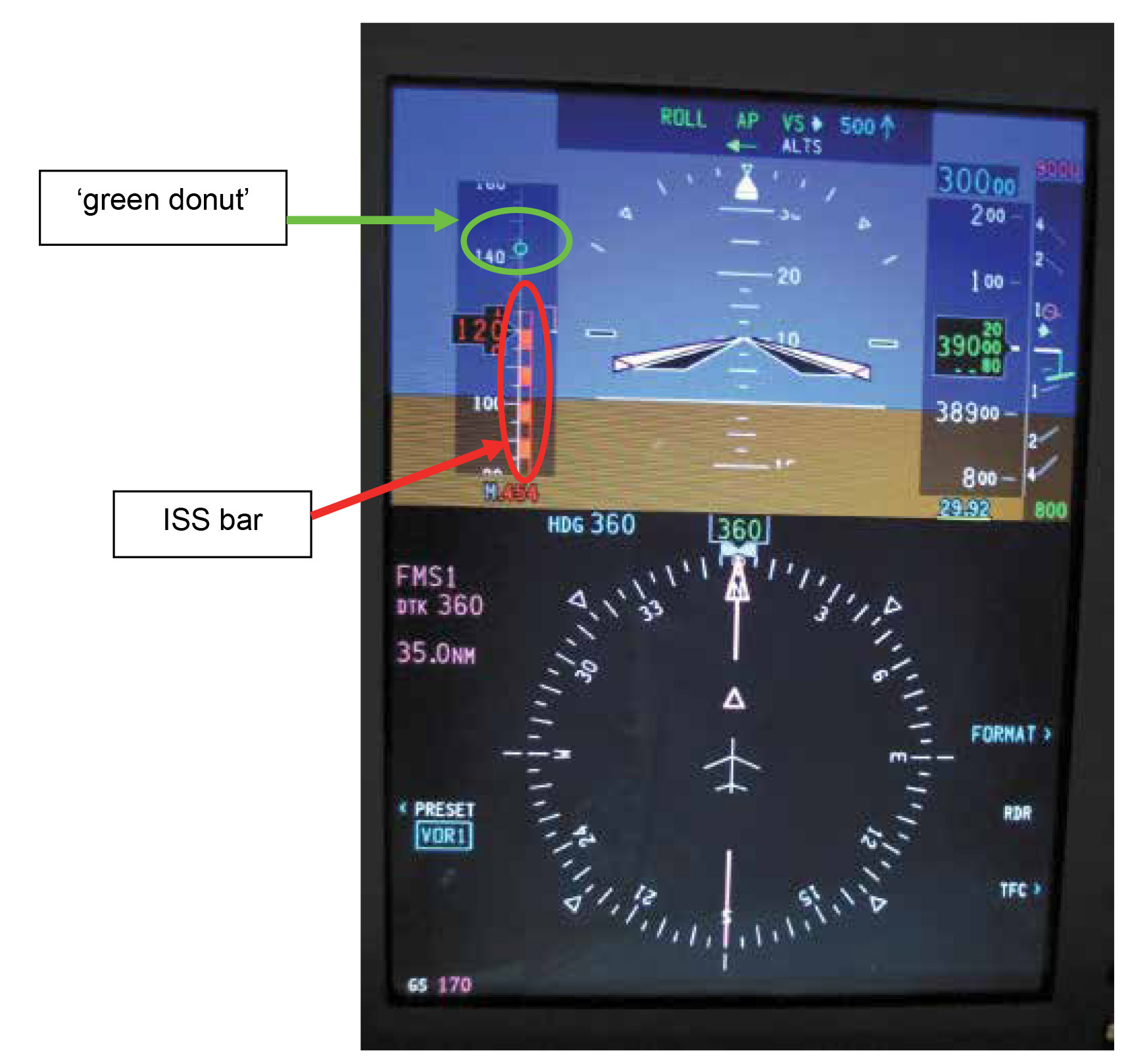I heard years ago that using the vertical speed mode of your autopilot is one of the most dangerous things you can do. With a moment's inattention, you can find yourself too slow. "You can even stall," we are warned. Relax, you think, your stall warning devices will protect you. Do you really want to leave it to that?
— James Albright

Updated:
2018-07-23

Citation CJ2+ N380CR, Chambery France,
Hervé at Spotting Aviation Forum.
The Gulfstream G450 has a great autopilot except for two functions: VNAV and FLC in the climb. The VNAV function is sometimes inaccurate, but that can be detected with a little math. The Flight Level Change mode in a climb, however, is a major annoyance. It can work perfectly one flight and on the next can pitch you up to 5,000 fpm where 500 fpm is called for. So what do we do? V/S, of course. Then the 500 fpm needs to come up and sooner or later we are climbing happily at 1,500 fpm. We get distracted. The next time we look up we are below M0.70 and getting slower. It is a recipe for disaster.
Sound familiar? Here's my technique: if I have to resort to V/S in the climb I take my watch off and hold it in my hand. (I do the same thing when cross-feeding fuel.) I hate having it there, it gets in my way. Good. If someone distracts me, I return to FLC mode. I've been criticized for my paranoia. Now I have a case study to justify it.

1
Accident report
- Date: 31 December 2013
- Time: 1100
- Type:Cessna 525A Citation CJ2+
- Operator: Private
- Registration: N380CR
- Fatalities: 0 of 1 crew, 0 of 1 passengers
- Aircraft fate: Substantially damaged
- Phase: Climb
- Airport (departure): Leeds Bradford Airport, United Kingdom (EGNM)
- Airport (arrival): Palma de Majorca, Spain (LEPA)
2
Narrative
There isn't a lot of information available about the pilot, other than the fact he owned the aircraft, was 69 years old, had 3,900 hours of which 600 were in type, and had taken a high performance aircraft (an L-39) upset recovery course.

N380CR ground track, AAIB 1/2015, figure 1.
- The aircraft was kept in a heated hangar at Leeds Bradford Airport. On the day of the accident the owner planned to fly, with one passenger, from Leeds Bradford Airport to Palma de Majorca, Spain. He occupied the left cockpit seat and the passenger sat towards the middle of the cabin on the right side, wearing a three-point harness. Three small dogs were in the cabin, unrestrained, on and around the passenger’s lap. Before flight the owner had conducted a pre-flight inspection, noting no defects. The pitot and static heat were selected on before departure and the takeoff and initial climb were without incident. The aircraft followed a southerly track, climbing continuously towards the planned cruising level of FL 430.
- The pilot later reported one brief icing encounter, which he described as a “flash” of frost across an unheated area of the windscreen. The engine anti-ice had been selected on earlier in the climb and the pilot then selected the wing and tail de-ice on as a precaution, although no ice was seen on the wing at any time. The engine, wing and tail ice protection systems were selected off later in the climb.
- The climb was conducted with the autopilot engaged in vertical speed (VS) mode with a selected rate of climb of 2,000 ft/min and the thrust levers, for the FADEC-controlled engines, in the Maximum Continuous Thrust (MCT) detent. As the aircraft climbed, the selected rate was reduced in 500 ft/min decrements and, passing FL 410, the aircraft was climbing at 1,000 ft/min. At this point (1057:38 hrs) recorded aircraft data shows that the indicated airspeed reduced below 150 kt. The indicated airspeed continued to decrease, reducing below 140 kt, 46 seconds later. The pilot noted that the indicated airspeed was lower than he had expected, with the green ‘donut’ marker on the speed tape (indicating Vref) being slightly faster than his actual airspeed. He therefore reduced the rate of climb to 500 ft/min. The recorded data suggests that this occurred around 1059:17 hrs, when the indicated airspeed was 128 kt. Based on his experience, the pilot considered that the selection of a vertical speed of 500 ft/min should have managed the aircraft’s energy sufficiently to achieve FL 430 without incident. However, recorded data shows that over the next 50 seconds, the speed gradually reduced by a further 10 kt.
Source: AAIB 1/2015, pp. 6-8
The fact the pilot was using the "green donut" for a climb at high altitude (or any altitude), is alarming. What is the green donut?
REFERENCE APPROACH SPEED. The reference approach speed (RAS) cue is a small green circle that shows at the bottom right of the airspeed tape to indicated the calculated RAS.
- RAS is variable and is automatically calculated using 1.3 VS. Airspeed, AOA, and normal acceleration are also used to calculate RAS.
Source: Cessna Citation CJ3 OM, p. 3-25
The "green donut" is used for approach. The 1.3 VS stall margin is inadequate for flying at high altitude where there is little excess thrust available. So what speed should have been flown? The CJ2+ Operating Manual isn't definitive for higher altitudes:
Ensure gear and flaps are up, set power as needed and select autopilot (if desired). Monitor pressurization and fuel. Climb at approximately 200 kt until nearing 30,000 feet, then use a slower speed.
Source: CJ2+ OM, p. 18-5
But what is a "slower speed" exactly?
Consult the buffet onset chart in Section IV, Performance, Standard Charts, of the FAA Approved Airplane Flight Manual to ensure adequate maneuver margin during the climb phase of flight.
Source: CJ2+ Flight Planning and Performance, p. 3
The AFM buffet onset chart (p. 4-33) isn't very helpful in that is provides a Mach number, M 0.42 for the weight and altitude in this case. But the accident report went through the math to produce the number in knots:
The AFM provides a method for calculating the available buffet margin for various weights and altitudes. Applying the aircraft’s estimated weight of 11,758 lb and an altitude of 42,500 ft shows that, using a 1.3g margin, the low-speed buffet would be encountered at M 0.52 and an indicated airspeed of 140 kt. The accident aircraft was effectively in wings-level flight with 1g recorded just before the loss of control and in this condition the buffet speed is reported as M 0.45 (120 kt) – very close to the actual recorded speed of the accident aircraft just before it departed from controlled flight.
Source: AAIB 1/2015, pp. 6-8
This is like saying: "climb at whatever speed you want, just don't stall the airplane." I've heard a good technique in this airplane is 230 KIAS until Mach 0.55. But the Flight Planning and Performance manual gives a speed schedule that shows the pilot was 20 knots slow when he diverted his attention.

CJ2+ Climb speed, anti-ice off, CJ2+ Flight Planning and Performance, p. 5
- At some point between FL 420 and FL 430 the pilot noted the upper wind, displayed on the primary flight display (PFD), and decided to check the forecast winds chart that he had saved on his tablet-style portable electronic device (PED). He therefore looked down to the PED, located on the unoccupied right cockpit seat for what he believed to be a second or two. The pilot later recalled being “head down” looking at the PED when, without warning, he heard a ‘click’ and the aircraft pitched severely nose-down and rolled to the right. He thought that the stick shaker may have activated once as the aircraft pitched down; data shows that this occurred at 1100:08 hrs.
- The pilot then recalled a violent and very confusing rolling departure from controlled flight. The aircraft almost immediately entered high cirrus cloud, obscuring the horizon. The pilot was unable to interpret the PFD attitude indicator, which he described as presenting information that he could not recall having seen before. He did not recall exactly how long this persisted but he did recall checking both the left and right PFD displays, which were similar in appearance.
Source: AAIB 1/2015, pp. 6-8
I am not buying the "pilot was unable to interpret" line; I believe the pilot simply froze. The declutter mode isn't different enough to cause enough confusion to lead to what follows.

Nominal PFD (left) and PFD declutter mode after roll greater than 60 degrees, AAIB 1/2015, figure 6
- The pilot made several attempts to recover the aircraft, although he could not later recall what control inputs he made. He recalled selecting idle thrust and achieving almost level flight at one point but, he had not increased thrust and the aircraft slowed rapidly and again departed from controlled flight. During the period that the aircraft was out of control it descended into clearer air between cloud layers, with a visible external horizon allowing the pilot to regain control.
- The pilot re-established communications with ATC who instructed him to maintain FL 280. He believed that he had re-engaged the autopilot, but when he released the yoke the aircraft immediately adopted a nose-up attitude and climbed approximately 2,000 ft before he regained control. He then noted that the pitch trim was in the fully nose-up position and the autopilot had not engaged.
- Having set an appropriate trim position and now in a stable flight regime, the pilot confirmed that his passenger was uninjured. He noted damage to the upper surface of the left wing and his passenger reported similar damage to the right wing.
- Given the damage to the aircraft, the pilot did not want to exceed 1,000 ft/min during descent and therefore he estimated that it would take 25 to 30 minutes to land. This placed Leeds Bradford Airport within the available options and, as he had only recently left that airport, was certain of the weather and was familiar with the airport, he considered this the best option with the lowest risk. He informed ATC of his decision and the remainder of the flight was without further incident. The pilot stated that the aircraft handling appeared unchanged by the damage it had sustained.
- The pilot, passenger and the dogs were uninjured.
Source: AAIB 1/2015, pp. 6-8
3
Analysis
The list of mistakes is pretty long. But let's make note of just a few. First, the pilot wasn't sufficiently wary of using the vertical speed mode of the autopilot in a climb. Second, he seemed to think reference approach speed was a good target for high altitude climb. Third, he diverted his attention after noticing his airspeed was critically low. Fourth, he froze during the first steps of recovering from an unusual attitude. Finally, it seems he botched the recovery before, during, and after losing sight of the horizon.

Right wing internal damage, AAIB 1/2015, figure 2.
- Inspection after the accident flight showed that the aircraft’s wings were damaged in a manner consistent with overload in positive symmetrical bending. Five ribs in the outboard wingbox of the left and right wings were damaged by buckling in a manner similar to that shown in Figure 2, and the bonded joints between the ribs and the upper and lower wing skins had failed in overload. The upper and lower outboard wing skins of both wings were permanently deformed with a significant loss of aerofoil shape. Despite the disruption to the wing structure, which on this aircraft type forms an integral fuel tank, no fuel had leaked from the wings and the wing skins remained firmly attached to the front and rear spars. The upper wing skins above the main wheel wells, at the inboard end of the wing close to the fuselage, were also found buckled due to overload. The damage was consistent with symmetrical ‘pullout’ manoeuvre loads between +3.6g (‘limit’ load) and +5.4g (‘ultimate’ load).
- At 1100:08 hrs, while climbing through FL 426 with a pitch attitude of 11.5°, the aircraft rolled right to 57° over a period of four seconds (Figure 4). No buffet vibration could be identified prior to this from the recorded accelerations. This roll attitude should have triggered the PFD ‘declutter’ mode and an EGPWS bank angle warning. During this time, the aircraft pitched down to -9°, the autopilot disengaged, the aircraft reached an indicated airspeed of 116.7 kt but the recorded normalised AOA remained at 0.61 units prior to reducing to 0.27 units.
- The aircraft then rolled back to the left during which the normalised AOA increased to above the threshold required to activate the stick shaker (0.87) for approximately 0.5 seconds before again sticking at a value of 0.78. Control column and rudder pedal positions were not recorded, so it was not possible to establish the control inputs being made by the pilot.
- After rolling to the left to -66°, the aircraft rolled back to the right and between 1100:12 hrs and 1100:35 hrs completed five 360° rolls to the right. The derived roll rates increased progressively from 111°/sec to 120, 152, 153 and finally to 181°/sec. During this, the EGPWS download confirmed a further 12 bank angle warnings and the aircraft oscillated in pitch and slowly pitched down to a minimum of -68°, before then pitching up to -3.6° with a normal acceleration of a 3.25g. The outcome of this was not to arrest the descent but to reduce the airspeed significantly.
- Engine power was reduced to idle at 1100:34 hrs and remained there for the next 72 seconds. During the fourth complete roll, the recorded normalised AOA became unstuck and increased to 1.0 for six seconds. No further static AOA behaviour was noted for the remainder of the recording.
- After the 3.25g pull-out, the aircraft pitched down again and appeared to turn through a further 360° roll to the right while pitching down almost vertically to a minimum pitch attitude of -89.7°. The Attitude Heading Computer (AHC) manufacturer indicated that at such pitch attitude, the roll and heading values “are not well defined”.
- Pitch attitude then increased, and there followed two oscillatory pitching manoeuvres over the next minute and a half. During the first of these, the aircraft rolled to 115° right, the indicated airspeed reached its maximum of 295 kt (Mach 0.77) and an overspeed warning was recorded.
- At 1100:58 hrs, as the pitch attitude increased, the descent was arrested at FL 270, which also corresponded with the peak normal acceleration of 4.48g. The descent of 15,662 ft over 46 seconds equated to a vertical speed of approximately 20,000 ft/min. Ten seconds prior to reaching the maximum pitch attitude of 70° during this pitching manoeuvre, the normalised AOA increased to above 0.87 (peaking at 1.0) and remained there for the next 33 seconds. The minimum indicated airspeed as the aircraft began to pitch down again was 44 kt.
- At the top of the second pitching manoeuvre, the normalised AOA again exceeded 0.87 for two separate periods of two seconds and four seconds, with a minimum recorded indicated airspeed of 93 kt.
- At 1103:10 hrs, the pitch, roll and heading parameters stabilised, airspeed increased through 200 kt whilst the aircraft maintained FL 300. Vertical speed for the next minute and a half varied between 2,400 ft/min to -2,300 ft/min but eventually stabilised. The autopilot was then re-engaged and the aircraft returned to Leeds Bradford Airport.
Source: AAIB 1/2015, pp. 9 - 16

PFD showing ISS with an aircraft speed of 130 kt, normalised AOA of 0.9, AAIB 1/2015, figure 9.
- The pilot held a FAA Private Pilot Licence issued on the basis of his UK PPL. He completed initial type rating training for the Citation CJ series at a major training provider in Wichita, in 2006 and had returned to this provider for annual recurrent simulator and ground school training.
- In addition he had completed a ‘jet upset’ course on an L-39 aircraft in Albuquerque, New Mexico in 2006. This comprised ground school and two flight sorties of 0.6 hours each.
- The pilot later stated that he had started to use Vertical Speed mode during the climb after he found that N380CR “hunted in pitch” when climbing in Flight Level Change mode.
- The AReS [Aircraft Recording System] recorded data shows that the AOA vane was sticking on the accident flight and also on a previous flight on 7 December 2013, in which the sticking AOA occurred at or close to the top of the climb to cruising altitude, where the ambient air temperature was very low. On the accident flight, this appeared to occur at a higher static air temperature and lower altitude but, in both cases, any moisture within the AOA vane case would readily form into ice, restricting the rotation of the AOA vane.
- CT-scanning images of the AOA vane showed that an internal PTFE seal was displaced and was not sealing correctly against the vane spindle, and leak testing of the unit confirmed the lack of sealing capability of the PTFE seal. Witness marks on the PTFE seal’s flange showed that, at some point since the AOA vane unit was manufactured, the seal had been in full circumferential sliding contact with the vane spindle. It must, therefore, have moved position at some point during its service life in N380CR.
- The presence of a gap between the PTFE seal and the internal volume of the AOA vane case provided a path for moisture to enter the vane case, when the aircraft is parked and unpressurised. There was, however, no visible evidence of water staining or corrosion on the internal components of the AOA case when those parts were examined but it is likely that only a small amount of moisture would be required to create an intermittent AOA ‘sticking’ mechanism. The sticking of the AOA position represented a subtle, dormant failure that was not readily apparent to the pilot as it did not generate a warning annunciation.
- The stall warning system was reliant on a single AOA vane to provide data to both the indicating system on the PFD and the stick shaker, which should have activated at least 5 kt before the stall. The sticking of the AOA vane, probably by freezing, removed the safety feature that was designed specifically to be a barrier to this type of event.
- After the initial roll to the right, the pilot was not presented with the correct ISS indication on his PFD, valid normalised AOA on the AOA gauge or the operation of the stick shaker. Other classic indications of an impending stall would have been present, including buffet and a display of low airspeed. The confusion encountered after autopilot disconnection, uncommanded roll and distraction from his PED is likely to have compromised any immediate recovery by reducing angle of attack.
- As the aircraft departed from controlled flight into the sequence of right rolls, the display system reverted to the ‘declutter’ mode, with which the pilot was not familiar. A number of EGPWS ‘BANK ANGLE’ audio warnings were triggered and the AOA vane only moved during the fourth complete roll, which should have led to a stick-shaker activation for six seconds. The high roll rate, its effect on the attitude display and the prevailing IMC conditions resulted in a prolonged upset that was only recovered once the pilot had a visual external horizon. This recovery may, in part, have been due to the additional upset training the pilot received in 2006.
Source: AAIB 1/2015, pp. 27 - 30
4
Cause
There is a lesson in all this for us: understand what your autopilot vertical speed is doing during a climb and be very paranoid whenever using it. Don't allow distractions while climbing in V/S, otherwise go back to FLC. If you think you might be prone to panic, spend some time in a simulator and ask the instructor to surprise you at some point.
The pilot operated the aircraft in an autopilot mode which left it vulnerable to a stall and did not monitor the reducing airspeed as the aircraft reached its cruising altitude. The ‘sticking’ of the stall warning system removed the safety feature specifically designed to protect against this.
Source: AAIB 1/2015, p. 30
References
(Source material)
Air Accident Investigation Branch (AAIB) Bulletin 1/2015, Farnborough House, Berkshire Copse Road, Aldershot, Hants, GUI11 2HH, 8 January 2014
Cessna Citation CJ2+ Operating Manual, Original, August 2006
Cessna Citation CJ2+ Flight Planning and Performance, Model 525A, 525A-0300 and on, 6 December 2005
Cessna Citation CJ3 Operating Manual, Serial 525B-0001 and on, 02 February 2005